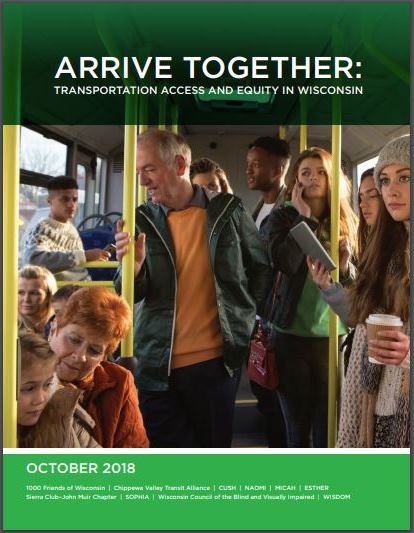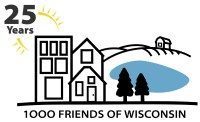1000 Friends of Wisconsin, along with our partners Sierra Club and others across the state released a first-of-its kind report called “Arrive Together: Transportation Access and Equity in Wisconsin”. This report provides a profile of nine cities in Wisconsin that have public transit systems, the challenges that are faced by users of these systems and offers solutions on how we can get better.
 Here are the key findings from the report:
Here are the key findings from the report:
- Public transit plays a major role in connecting Wisconsinites to jobs and opportunities. Many thousands of our state’s citizens rely on public transit for earning an income, accessing school, healthcare, grocery stores, community and leisure.
- We are however, failing to invest in public transportation adequately. The state spends less on transit as a dollar amount today than we did ten years ago. Transit agencies across the state have been forced to cut routes, reduce frequency and increase fares in this time period.
- Bus service to communities of color are less frequent and take longer to complete. Bus transfers are often cumbersome and people often have to wait for a long time in extreme weather to complete a journey. Trips that often take only 10-15 minutes by car can take up to 1 and a half hours by bus.
- There is often no way to access major population centers by bus in Wisconsin. For example, no service exists to one of Dane County’s fastest growing cities—Sun Prairie from its capital Madison. A cab ride there from downtown Madison costs around 60 dollars.
The solution, really, is pretty simple: We have to get our priorities straight. Stop expanding highways that cost billions and fail to address congestion or connect people to the places they want to go. Instead, focus on local infrastructure – fix the roads we have, and invest in public transportation, walking, and biking.
Lots of people already rely on public transportation today, and more will in the future. The population of seniors is growing rapidly, especially in this region. And young people want to live in places where they have options and can get around without a car.
If we want to create communities where people want to live, and where everyone has access to work, to school, to the doctor’s office and the places that matter, we have to invest in public transportation.
